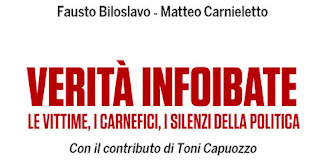Even if Vilota is the name of an instrumental dance of Dignano, specifically the “villotta a ballo” (dancing villotta) when it is sung and played is called “furlana”. “Villotte a discanto” are typical monostrophic lyric songs, composed mostly of hendecasyllables, available in the Venetian Northern Adriatic area, so in Istria too.
It is supposed that similar styles were the origin of the Medieval discant, due to the influence of the popular song on the clerical one.
“Villotta” is an ancient kind of peasants’ diaphonic songs, so a two voices (male and female) hymn and possibly it is one the more ancient example in Europe, even if unfortunately today is almost disappeared. From the little known satirical chant of Rovigno (Rovinj), called “butunada” to the popular singers of “canti a pera” (it means in pairs) and the “longa” of Gallesano (Galižana): they were several until few years ago. in Dignano (Vodnjan) and Valle (Bale) we find the vocal style called Basso, but today it is disappeared like any documentation about it.
The Villotte text is generally lyrical and satyrical (for the most erotic and sometimes explicitly sexual). According to the repetition of the text they are called “Mantignade” (literally mornings) when the verse is repeated once ( in Sissano- Šišan) and “Canti a pera” or “a la longa” if the verse is repeated twice or fragmented in the repetition, while in the “Bassi” of Dignano (Vodnjan) the words are improvised during the performance, like it is used in jazz stylistic device. An evident hint of this practice is that sometimes the words are whispered to the singer from one of his mates between a verse or the other or during a pause for breath.
In the southern area of Croatian Istria and in Veglia (Krk) there is a similar tradition found in the songs called “tararankanj”. They are “na tanko i debelo” (thin and thick), two part singing in the Chakavian dialect and nowadays they are still very popular.
A technical note: these two part songs use the so called “Istrian” scale (six-tone, untempered), but it can’t be found in the Istrian-Venetian discants except for the Sissano (Šišan) “mantignade”.
La me morosa iò la campanela
la me morosa iò la, la campanela
co la camina la la fa sonare
co la camina la la, la fa sonare-a.
Sia benedete sia sta compagnia
sia benedete sia sta compagnia
che fa sta alegro l’omo col cervelo
che fa sta alegro l’omo-a ma col cervelo-a
Sia benedete quei che riva adeso
sia benedete quei che-a che riva adeso-a
pronteghe la carega per sentare
pronteghe la carega ma per sentare-a.
Un tipico canto a la longa di Gallesano
In questo è ‘l mar che è ‘l mondo
tu sei l’amica stela
che può la navicela
de l’alma mai salvar
che può la navicela
de l’alma mia salvar.
Prendi le mie catene
che m’incatena il cuore
son prigionier d’amore
fedele a te sarò
son prigionier d’amore
fedele a te sarò.
Un tipico esempio di basso dignanese
El sul si baso che ‘l vol far la note
a piano i me ritiro a
a piano i me ritiro ma a le to porte-a
ma a le to porte-a
E sul più bel ca si levà la luna
per ti me tuca far la
per ti me tuca far la sentinela
ma la sentinela
Un basso vallese
Morosa mia fa che ti lu meto
morosa mia fa che ti lu meto
el mio cavalo dentro (la) de la mia (tua) stala
de la mia stala.
Una mantignada di Sissano
In mezo al mar ghe se una fontanela
in mezo al mar ghe se una fonanela-ai
chi beve de que l’aqua se inamora-ai
e mi me go bevudo una scodela
e mi me go bevuto una scodela-ai
e me so inamorado de Marusa bela na nai
picia bela na nai
vraiza mare che te iò fato na nai
te iò da lato na nai.
Una butanada di Rovigno
Nun vido l’ura che ‘l sul vago a li base
par vidi ma marì cun li basase
el vignaruò cu li basase piene
par faghe rabia a quiste quatro iene.
E li basase ca puorta bara Nane
li fa cicà da pioùn ste pietabrane
e se i maridi ga puorta i suoldi a brente
ste ingiabanade da fimane no li si mai contente-ean.
 Language
Language Italian
Italian
